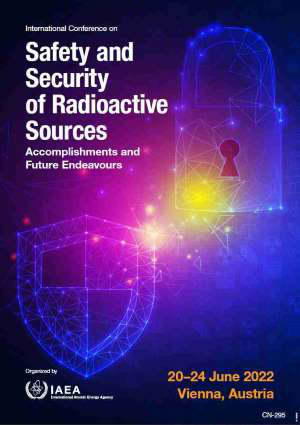Speaker
Description
Based on the Nuclear Energy Regulatory Agency data, there are 37 hospitals using radiotherapy technology modalities until 2018, including Cobalt-60 teletherapy. The waste from the teletherapy machine is the disused source of Cobalt-60. Based on Nuclear Energy Regulatory Agency Regulation No. 6 of 2015 on the Security of Radioactive Sources, management of Disused Sealed Radioactive Substances (DSRS) is divided into two types. For managing DSRS categories 1 and 2, the source is stored in a head or transport container and placed in pallets and metal shelves. For categories 3-5 are carried out by grouping the heads and placing them in a concrete shell, then releasing the source or dismantling. Furthermore, it is encapsulated in a capsule and stored in the High Activity Waste Temporary Storage. The disused source Cobalt-60 teletherapy must manage by following category 1 procedures. It requires a larger storage area and a non-reusable head that makes the storage room of BATAN full rapidly. To overcome this problem, the disused source is transported using a transport container and then be transferred into a storage container in the storage room. Accidents during the transfer must be minimized by the proper safety analysis. The purpose of this study was to analyze the causal factors and probability values of accidents that occur in the transfer process. Thus, the results of this study can be considered for the safety aspect in designing storage containers to facilitate the storage of Cobalt-60 teletherapy source waste.
The Fault Tree Analysis (FTA) method was used to analyze some possible failures. FTA is a deductive analysis that focuses on one undesired event and provides a method for determining the cause of the event. The initial stage of constructing a failure tree was to determine the peak event or undesired event. To determine the factors causing the failure, some scenarios were made from the displacement of the source of Cobalt-60 teletherapy. In this study, two failure scenarios obtained were moving the transport container from the carrier car and removal the source from the transport container to the storage container. In the first scenario, to move the transport container from the transport car, a forklift was used. Meanwhile, in the second scenario, we used a T-rod tool.
It is found that the undesired event from the first scenario is the falling container, and the second scenario is the falling source drawer. The root causes that lead to the undesired events from the two scenarios are operator negligence in complying with work safety rules and equipment maintenance, as well as the failure of the used equipment.
| Country OR Intl. Organization | Indonesia |
|---|

